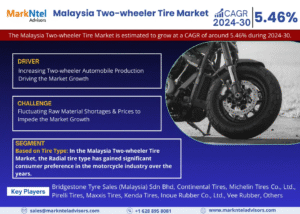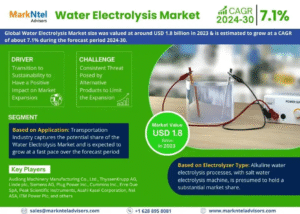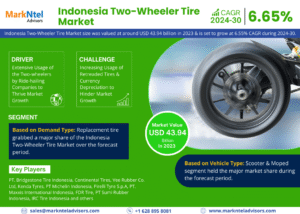Crowdfunding makes it easier to raise money without a loan or investor. Whether it’s for a personal emergency, a creative idea, or a nonprofit cause, the right platform can help you get the support you need.
But not every site works for everyone. Some charge high fees. Some only focus on businesses. Some don’t support donations outside specific countries. The one that fits you depends on what you’re raising money for and who your audience is.
This guide breaks it all down so you can choose better and avoid wasting time or money.
What Makes a Crowdfunding Site “Best”?
People often look at how fast they can raise money. But that’s not enough. A good platform should also be easy to use, clear about fees, and flexible on how funds are collected. Some let you keep the money even if you don’t reach your target. Others don’t. Some support many countries. Some only work in one.
Also think about how the site helps you get seen. Do they promote campaigns? Do they have tools for sharing? These details affect whether your fundraiser gets noticed.
You don’t need a perfect site. You need one that works for your situation.
Crowdfunding for Personal Causes
If you’re raising money for medical bills, school fees, or an emergency, look for platforms that support personal causes. These sites should allow individual fundraisers, not just charities or startups.
Many platforms in this space keep things simple. You sign up, create a fundraiser, share it, and collect donations. But they vary in fees and how donations are processed.
Some take a small percentage from each donation. Others have flat fees. A few let you collect the full amount. Read the fine print before starting.
Another thing to check is payout speed. When do you get the money? Some platforms send funds as they come in. Others wait until you reach a goal or close the campaign.
Crowdfunding for Charities and Nonprofits
If you’re raising money for a registered charity or nonprofit group, look for platforms with donation receipts and tax features. This helps donors claim tax deductions. It also builds trust.
Some platforms focus on local nonprofits. Others support global giving. If your donors are spread across countries, check if the platform supports international currencies.
Also check language settings. Can people switch to their native language? Can you set your fundraiser in more than one language? This matters if you’re fundraising in Europe or outside the US.
The best sites for nonprofits also offer campaign support, like fundraising tips or extra tools for reaching more donors.
Crowdfunding for Business or Startups
Raising money for a business idea? That’s a different setup. Business crowdfunding platforms often focus on equity or rewards. That means backers either get a small stake in your business or a product in return.
These platforms tend to have stricter rules. You may need to show a plan, video, or product prototype. Some require legal checks. Some only support campaigns in the US, UK, or EU.
The upside is you may raise larger amounts. But there’s more to manage, and sometimes higher costs.
If you’re not sure yet how serious your idea is, test it on a donation-based site first. You’ll know quickly if people are interested.
Crowdfunding for Creative Projects
For artists, filmmakers, and musicians, a good crowdfunding platform should support creative categories and let you offer perks. Backers like knowing what they’ll get.
The best platforms for creatives help you set up different reward levels. So someone can donate a small amount or more and get something in return.
These platforms often have strong communities. People visit the site to browse new ideas. That can help with visibility. But you’ll still need to do most of the promotion yourself.
Most creative platforms take a cut from what you raise, plus payment fees. They may also ask for exclusive rights to your campaign during the fundraiser. Know what you’re agreeing to.
Crowdfunding for Memorials or Funerals
If you’re collecting money after a death, you need a platform that’s fast and easy. Some allow campaigns to be set up in minutes. Others may require ID checks that delay payout.
You’ll also want one that doesn’t limit you to a certain region. Grieving families often get support from friends and relatives in many countries. So global payment options matter.
Make sure the platform doesn’t require you to meet a goal to get the money. In these cases, every donation helps, even if the target isn’t reached.
Check if donors can leave messages. Personal notes are often more comforting than the donation itself.
What About Fees?
Every platform has costs. Most take a small percent of each donation. Some charge setup or monthly fees. Others let you fundraise for free but still take payment processing fees through Stripe or PayPal.
Look for platforms that are upfront about this. If the fee structure is hidden or hard to find, skip it.
Also check currency fees. If you get donations from other countries, you might lose some money in currency conversion. It adds up if your fundraiser goes global.
Some platforms give donors the choice to cover the fee. This can help you keep more of what you raise.
What If You Don’t Reach Your Goal?
Some crowdfunding sites are “all or nothing.” You only get the funds if you hit the full goal. Others let you keep whatever you raise.
If you’re running a personal fundraiser or helping a family, it’s better to use a site that lets you keep all funds. Even half your target can make a difference.
But if you’re raising money for a product or business, “all or nothing” can help create urgency. It tells donors that the project only happens if fully backed.
Just know what you’re signing up for before you hit publish.
How Easy Is It to Use?
A good crowdfunding site should be easy to set up. You shouldn’t need a designer or developer. Most let you write your story, add images, and start sharing right away.
Some offer templates or starter guides. Others give you nothing. If you’re new to fundraising, this makes a big difference.
Check how mobile-friendly the site is. Most people read fundraisers on their phones. If the page loads slowly or breaks on mobile, you’ll lose donors.
Also test how easy it is to share your campaign. Can people post it on social media in one click? Can they send it on WhatsApp or email easily?
Where Do You Find the Right Platform?
Start by knowing your goal. What are you raising money for? Who will donate? Where do they live?
Then match that with the platform’s features. Don’t just pick the biggest one. Pick the one that fits you.
Use reviews and comparison sites. Search Reddit or Twitter for real experiences. Skip platforms that have payment issues or poor support.
Also try making a test campaign. You don’t need to publish it. But setting one up shows how simple or confusing it is.
Crowdfunding Isn’t Magic
Some people think if they post a fundraiser, donations will come in. That’s rarely how it works.
Even on the best platform, you still have to share your story. You have to ask friends and family to support you. You may need to post updates or photos to keep interest.
Many fundraisers fail not because of the platform but because they don’t get shared or explained well. Keep that in mind before starting.
The platform is just the tool. You’re the one who makes it work.
Crowdfunding Tips That Work
Keep your story short and honest. Don’t fake emotion. Say what you need and why.
Use a photo that shows who or what the fundraiser is for. People connect better with real faces.
Share your fundraiser more than once. People often forget. A reminder can help bring in new donors.
Always thank donors, even with a short message. It builds trust and encourages others.
Final Thought
There’s no single “best crowdfunding sites” for everyone. It depends on your need, your audience, and how you plan to reach them.
Start simple. Choose a platform that makes it easy for you to tell your story and collect donations without stress. Then focus on sharing it in a real way.
Crowdfunding works when people understand the need and feel connected. The right site just helps you make that easier.


